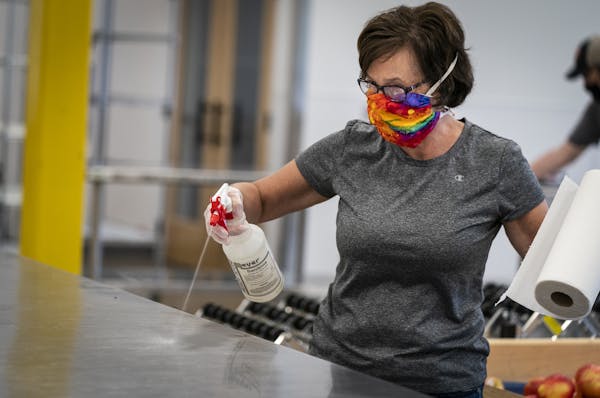MANKATO – In a college town peppered with bars often teeming with thirsty college students, a recent spike of COVID-19 cases attributed to a summertime surge of maskless young people is fueling growing trepidation for the coming fall semester. More than 16,000 students are expected to descend on this southern Minnesota city by the end of August, with many once again flocking to bars to drink and mingle.
Bars have been tagged as hot spots for the spread of the virus in Minnesota and across the country, so what happens in the city's drinking establishments over the next several weeks could have a real impact on the size and scope of an expected second wave of the coronavirus. It might also answer the question: Can bars and COVID-19 coexist?
From bar managers to Mankato city leaders, many say the challenge will be how best to balance caution and the need to avoid future outbreaks with the needed money that younger bar patrons provide.
In Mankato, the 507 was one of several bars state officials identified as a site of a recent COVID-19 outbreak among young adults. Isaiah Pitchford, general manager at the downtown bar, acknowledges walking on a knife-edge.
"It's a very fine line to walk and it's tough, especially when there's not a whole lot of guidance and not a whole lot of protocol," Pitchford said.
Staff members are wearing masks and rubber gloves, he said. Indoor seating has been spaced out and reduced to 35 customers at a time. Indoor seating is available only by reservation.
"You know we opened the door on June 1 and they kind of just say, 'Make sure everyone's wearing a mask. Make sure nobody's sick and, you know, now you can open,' " Pitchford said. "Most bar and restaurant owners feel you have to do what is safest for your employees and your customers."
After hearing reports that many of the city's bar patrons were not wearing masks, the Mankato City Council last week passed a mask ordinance that takes effect Friday and lasts for 61 days.
It requires most people over age 12 to wear a mask in public indoors, and public-facing employees must wear masks on the job.
It is one of several Minnesota cities requiring masks or considering doing so.
City Council President Mike Laven said officials hope the ordinance helps people forge new habits.
If they won't use social distancing — and indications are that the young bar patrons who fueled the recent spike in the virus were not doing that — maybe a mask ordinance will begin moving the dial, Laven said.
Violators face potential fines for not wearing masks, and chronic scofflaws could be hit with trespassing charges. But Laven said officials don't expect to penalize many. The most common response to people not wearing a mask will be education, he said.
"The community is going to have about six to eight weeks before the kids come back to college to get the behavior down," Laven said. "It's setting a norm."
After students return, the new ordinance will take some of the pressure off bar owners who have struggled since June to change the way people congregate in the city's bars. Moving to reservations, wearing masks when not seated at a table or while walking to the bathroom will be an adjustment, Laven said.
"I've had a lot of conversations with bar owners who said it's kind of hard to break those habits like standing at the bar or standing in a group," he said.
On a sweltering late afternoon outside Rounders Sports Bar & Grill, another Mankato bar identified with a COVID-19 outbreak, friends Sammy Kuhlow and Sydney Brezany said they don't believe the recent spike in cases will continue in Mankato among 20-somethings like themselves. They attribute the recent uptick to young people going a little stir-crazy after closures and quarantines were lifted in June.
"It had a lot to do with it just wanting that human contact," Brezany said. "I understand why people were frustrated, especially with that demographic, because they had to take all those precautions and being in isolation."
Kuhlow said few in their age group are worried about catching the virus. Only two COVID-19 deaths in Minnesota have involved people under 30, although state health officials fear that coronavirus among this young, mobile population could spread to older adults at greater risk.
"People our age aren't thinking about who we're hanging out with," Kuhlow said. "So we're like, 'Oh, we'll survive COVID if we get it.' "
But the risks of spreading the virus to more vulnerable people is sinking in, Brezany said. That's why she and Kuhlow said they don't believe young people are going to be the cause of another spike.
"I don't live around family members and I don't see my grandparents," Brezany said. "But I know that when I'm going out into a setting where I could come into contact with that kind of at-risk population, I am taking precautions and wearing a mask."

A tale of 124 hoarded Minnesota cats has at least a hundred happy endings

Walz, St. Paul leaders urge support for copper wire theft bill: 'We've got to get in front of it'
Body of missing canoeist, 15, recovered from southwest Minnesota lake

High winds flipped a FedEx truck traveling on Bong Bridge in Duluth

